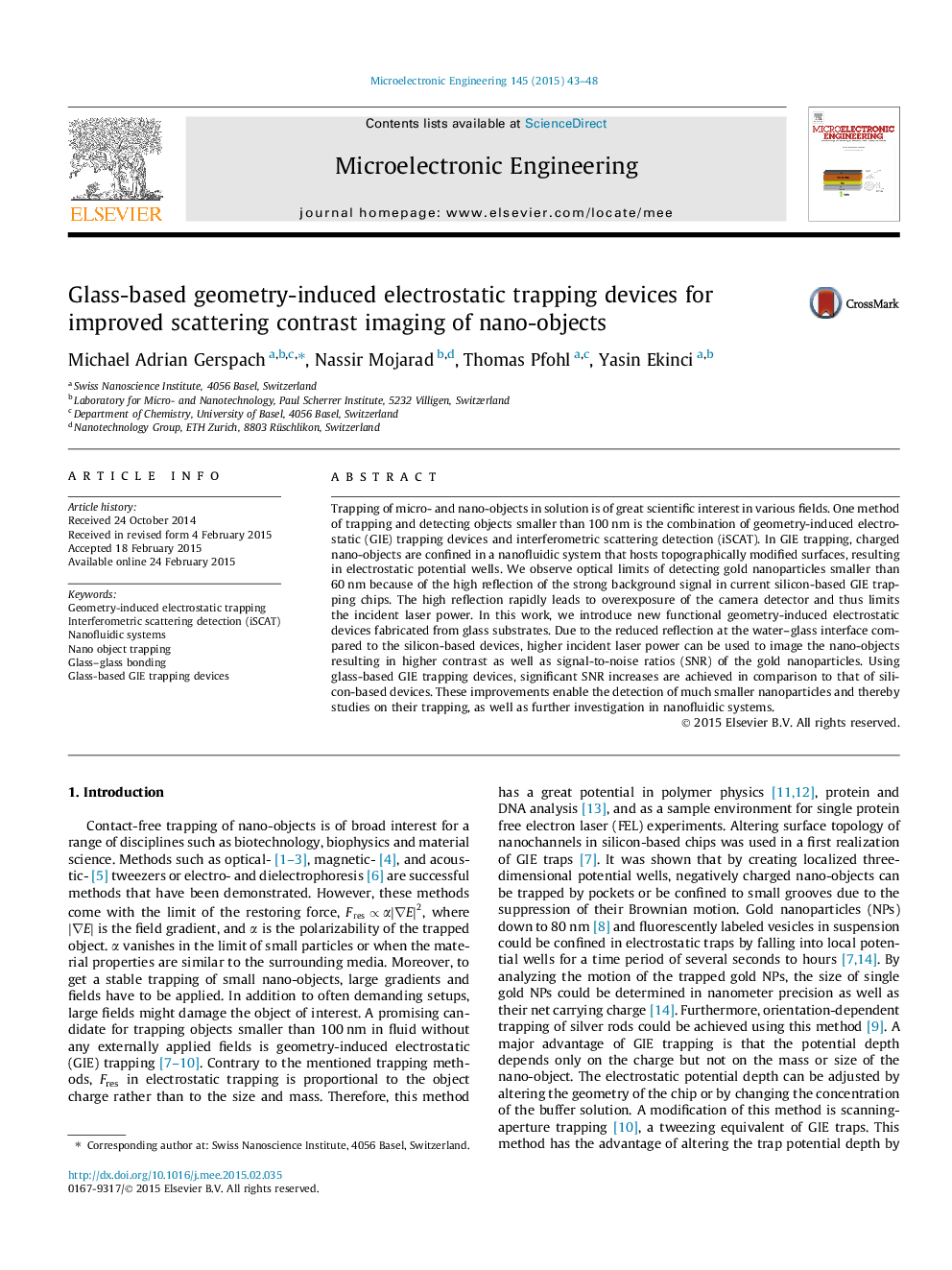| کد مقاله | کد نشریه | سال انتشار | مقاله انگلیسی | نسخه تمام متن |
|---|---|---|---|---|
| 539135 | 1450336 | 2015 | 6 صفحه PDF | دانلود رایگان |
• Fabrication of new glass-based geometry-induced electrostatic (GIE) trapping devices.
• Much higher SNR ratios of gold NPs are achieved with the glass-based devices.
• Detection of 40 nm gold particles in GIE trapping devices using iSCAT microscopy.
• 40 nm gold particles in glass devices show higher SNR than 80 nm gold particles in silicon devices.
• Trapping of 60 nm gold particles using new glass-based GIE trapping devices is shown.
Trapping of micro- and nano-objects in solution is of great scientific interest in various fields. One method of trapping and detecting objects smaller than 100 nm is the combination of geometry-induced electrostatic (GIE) trapping devices and interferometric scattering detection (iSCAT). In GIE trapping, charged nano-objects are confined in a nanofluidic system that hosts topographically modified surfaces, resulting in electrostatic potential wells. We observe optical limits of detecting gold nanoparticles smaller than 60 nm because of the high reflection of the strong background signal in current silicon-based GIE trapping chips. The high reflection rapidly leads to overexposure of the camera detector and thus limits the incident laser power. In this work, we introduce new functional geometry-induced electrostatic devices fabricated from glass substrates. Due to the reduced reflection at the water–glass interface compared to the silicon-based devices, higher incident laser power can be used to image the nano-objects resulting in higher contrast as well as signal-to-noise ratios (SNR) of the gold nanoparticles. Using glass-based GIE trapping devices, significant SNR increases are achieved in comparison to that of silicon-based devices. These improvements enable the detection of much smaller nanoparticles and thereby studies on their trapping, as well as further investigation in nanofluidic systems.
Figure optionsDownload as PowerPoint slide
Journal: Microelectronic Engineering - Volume 145, 1 September 2015, Pages 43–48
